Welcome to Heliconias... Heliconias... Heliconias
This blog is all about growing Heliconias, an exotic plant not native to Malaysia. All pictures shown are digital photos of the actual species in my garden such as Rostrata, Dwarf Jamaican, Latispatha and several psittacorums such as Andromeda, Lady Di, Fuschia, Strawberry & Cream and hybrids such as Golden Torch and Alan Carle.
Heliconia are close relatives of gingers, bananas, birds-of-paradise and traveler’s palms. There are more than 200 (350 including cultivars) documented species of the single genus, with the bulk of them originating from Central and South America such as Guyana, Costa Rica, Berlize, Ecuador, Peru and Brazil. You may be interested to note that about 6 species have evolved separately in the South Pacific and Indonesia, and typically have green inflorescence.The name "heliconia" actually comes from Greek mythology after the great Mount Helicon, the abode of the muses of the arts and sciences.
The beauty of the heliconia lies in the brightly coloured bracts that are mistakenly called the flowers. The actual flower is the tiny little flowers that emerge from the large showy bracts. Each stem can only flower once, after which the entire stem deteriorates, drives up and collapses. As such, it is recommended to cut at the base of 'flowered-out' stems.
BTW, this blog has been read by visitors from Australia, Brazil, Chile, Colombia, France, India, Japan, Malaysia, Philippines, Puerto Rico, Mexico, Netherlands Antilles, Netherland, Singapore, Spain, Thailand, Trinidad & Tobago, United Kingdom & United States of America :-)
16th Sept 2009 : 17:30
cv Strawberries & Cream, Heliconia psittacorum L.f .
 Did you notice the 2 fruits which are drupes (a hard seed surrounded by fleshy pulp) in the first picture ?
Did you notice the 2 fruits which are drupes (a hard seed surrounded by fleshy pulp) in the first picture ?
BloomingAll year
Height3 - 5 Feet
HabitatFull sun to 30 % of shade
DistributionUncertain [Hawaii]
Inflorescence
Bracts3-5 bracts.
Strawberry red-pink distally & cream proximally. Basal bract mostly red-pink and a thin distal green keel.
Rachis
Cream with green tint
Sepals
Pale yellow with distal dark green bank and white tip. Orange with distal metallic black or green band.
Ovary
Pale yellow with green spot on distal corner
Pedicel
Cream with green tint.
Vegetation
Musoid







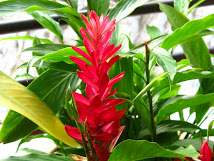
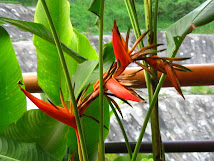


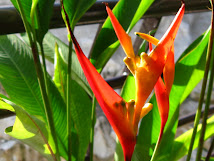


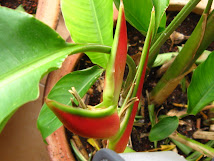


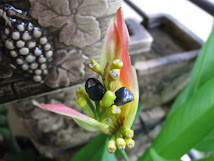
No comments:
Post a Comment